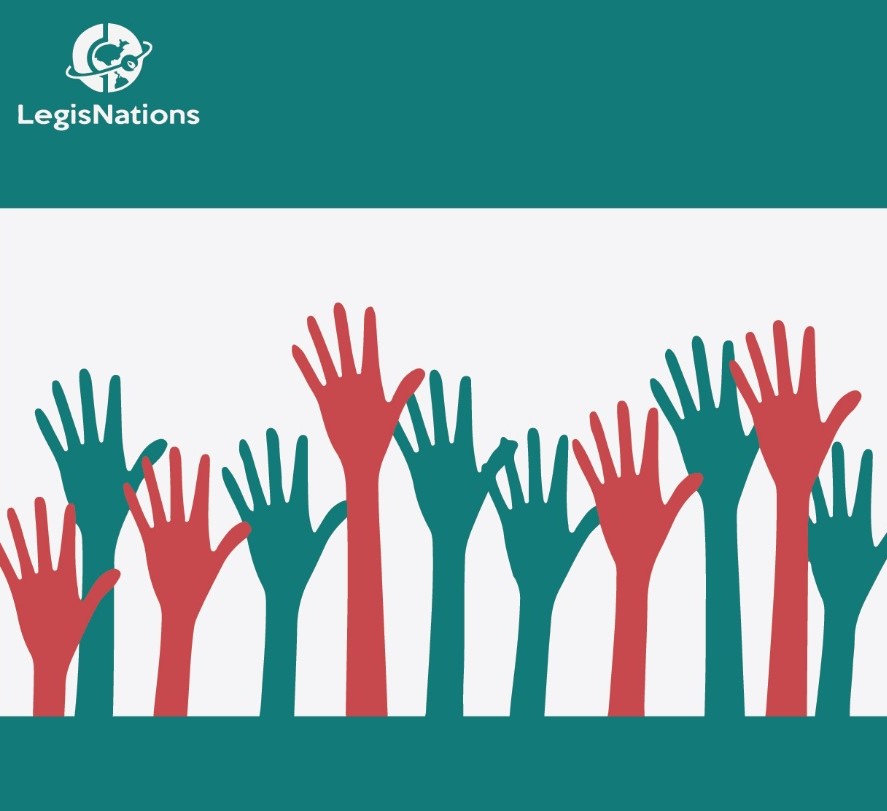INTRODUCTION
The system of reservation in India was adopted to prevent discrimination based on caste, sex, religion, race, creed etc, that is to promote affirmative action.
Article 15 and 16 of the Constitution of India provides for provisions for reservation of relatively unprivileged citizens of India. The articles ensure there is no discrimination on the basis mentioned above.
The main reason for such a reservation is to promote equal representation of these backward classes in the areas of Education, Employment and the Legislature and to uphold the general principles of equality embodied under section 14 of the Indian Constitution.
It refers to an arrangement where there is an act of keeping back a particular percentage of seats for people belonging to backward classes that may be subpar socially, economically or educationally. In India, these marginalized communities are divided into three main groups based on caste: Scheduled Castes, Scheduled Tribes and Other Backward Classes.
The caste system, prevalent in India since ancient times became the basis of division of occupation and root cause of atrocities on the lower castes that subsisted for years and years and kept on accumulating hardships on them until the government brought provisions for the protection of these vulnerable communities.
The policies to provide caste-based reservations initiated in nineteenth-century itself, there began various anti- Brahman protests due to the dominance of Brahmanas in superior posts like the bureaucracy and other white-collar professions. As a result, in the 1920s, the Mysore Government commenced a system of reservation for the non-Brahmans in educational institutions and was grouped as “backward communities”.
In the 1930s, the constitutional provisions relating to reservations were reformed in British India and with the advocacy of Dr B.R. Ambedkar, an agreement was concluded (also the Poona Pact) under which there would be reservation of seats for the backward communities in the legislature both at the federal and provincial level and a separate electorate for the minority religious communities. This became a part of the Government of India Act, 1935 and the two backward communities were now identified and named as the scheduled castes and scheduled tribes.
After independence, B.R. Ambedkar became the law minister of India and by the time the constitution was completely drafted it enshrined principles of equality under articles 14 to 18 that would mean uplifting the socially oppressed communities and also provided for directives to the state to promote the educational and economic well being of the marginal sections of the society emphasizing on Scheduled Castes and Scheduled Tribes.
Later, recommendations of the Mandal Commission were set in force in the 1990s after a series of protests by student unions opposing it. The main aim of the commission was to analyse the backward classes and to determine their share of quotas. The Mandal Commission recommended for allowance of 27 per cent reservations in Government jobs and other enterprises of the Central Government, this raised the total reservations to 49 per cent not exceeding the 50 per cent ceiling criteria fixed by the Supreme Court in the case of Indra Sawhney vs. Union of India.
REASONS FOR RESERVATION
Legal Factors-
Articles 16, 335, 338, 340, 341 & 342 of the constitution of India provide for provisions for reservation and protection of the depressed classes. The concept of Equality enshrined in Section 14 of the constitution forms a part of the fundamental structure of the constitution. Hence, it was imperative to bring the spirit of the constitution into working by the implementation of various provisions like Directive principles of state policies and articles prohibiting untouchability or discrimination of any kind to curb the caste, gender or religious differences in the society that had taken deep roots in India, ultimately making them estranged from the mainstream communities. Article 15 of the constitution prohibits discrimination on grounds of caste, colour, sex or creed and any law that makes discrimination evident is declared invalid. In the case of Nainsukhdev v. State of U.P., a law stipulating separate electorates for members of different religious communities was declared unconstitutional. Clause 4 to Section 15 empowers the State to enact provisions for the upliftment or advancement of socially and economically backwards or for the scheduled castes or scheduled tribes. Article 15(3) stipulates special provisions for women and children and empowers the legislature to make laws in their interest.
Economic factors-
A policy providing reservation for the victimized classes is also essential to promote stable economic growth as well as equity. When a few people of society belonging to a particular caste are ostracized and are refused basic resources that are essential for individual development such as education, proper healthcare, employment, etc, it ultimately leads to a situation where their potential is not optimally utilized and hence the human resources that contribute to a nation’s growth remain underutilized. The prevalent caste system led to a division of occupation according to caste. According to Akerlof-Scoville-Lal’s theoretical model, such division led to imperfect competition in the market and therefore the economic progress slowed down compared to the representation of a perfect market system.
Socio-Cultural Reasons
The Indian society was divided into four varnas mainly Brahmins, Kshatriyas, Vaishyas and Shudras. Shudras were considered to be people of the lower class and were earmarked for menial jobs and other blue-collar jobs, they could not access public facilities and were deprived of basic human dignity. Dalits, on the other hand, was a caste that was not recognized by the varna system and was considered outcasts or untouchables. Women can be the worst sufferers in such a set up since they belong to a vulnerable group within the backward class.
CRITICISMS
It is argued by many that the Reservation Policy has not been able to achieve its aim of freeing the Scheduled castes and tribes of their problems since these victimized groups are still suffering from acute poverty, illiteracy and unemployment.
The anti-reservationists also advocate that these provisions of reservation benefitted people who were economically stable or better-off among the scheduled castes and its benefits did not reach to people among scheduled castes who were in dire need of it. The employment and educational reservations guaranteed by the government was unable to reach the economically weaker sections of the society. There have been suggestions to amend the policy to not include the better-off of these communities
Another point argued is regarding the duration of this system of reservation, the reservation mainly was provided to improve the social and financial conditions of the vulnerable sections. Studies show there has been a significant improvement in accessibility of basic human rights to the depressed classes including the untouchable thus raising questions as to whether practices such as untouchability have halted and how long are we going to continue the reservations.
CONCLUSION
The reservation system continues to be a hot topic for discussion and resistance movements. Anti reservationist argues it to be discriminatory and incongruent to the spirit of equality, some demand reservation on the based on economic backwardness instead of caste. Due to the history of oppression suffered by these communities reservations become imperative. There is a concept of treating equals equally and unequals unequally; this is a form of positive discrimination which aims at bridging the gap between those who were historically ostracized.
Following are the suggestions to solve them;
There’s a need to scrutinize the lists of the backward classes that include the scheduled castes, scheduled tribes and the other backward classes and bring up a revised edition of lists that removes the classes that were unnecessarily or unfairly benefitted and addition of the communities to whom the benefit could not reach.
It’s very crucial to fix how long the reservation is going to last that maybe another 10 or 15 years when all the communities are brought at parity. So that it doesn’t arise a feeling of distrust among the masses that are outside this ambit of the reservation who might think it is an everlasting arrangement.
Even among these dejected classes, certain groups need more attention than the others, since, they are even more backward. Hence, there’s a need to further subcategorise these classes based on the urgency of attention. Also, a quota for a whole caste may ignore certain groups however subcategorization would mean the division of quota among the subgroups according to the need.
Primary education is the stump of a decent life, therefore, emphasis must be on the fact that this primary education reaches to all for their healthy future development and an independent committee must be set up to regulate and ensure that the benefit of reservation extends to only one generation of the above-mentioned communities and no other.
REFERENCES
- Agarwal, A. K. (n.d.). Reservation- Solution To The Problem. Retrieved July 27, 2020, from Legal Service India: http://www.legalserviceindia.com/articles/res_pro.htm
- Dhruv Sinah, D. A. (2020, June). An Alternative to India’s Reservation Policy. Compass’20, pp. 321-323.
- Explainer: The 1993 SC Judgement Capping Quaaotas at 50 per cent, Disallowing Them for the Poor. (2019, January 12). Retrieved July 24, 2020, from The Wire: https://thewire.in/law/supreme-court-indra-sawhney-reservation
- Mehra, N. (2019). An Analysis of Reservation in India. Law Time Journal.
- Pandey, D. J. (2015). Constitutional Law of India. Allahabad: Central Law Agency.
- Puja Mondal. (n.d.). Reservation System in India: Concept, Arguments and Conclusions. Retrieved July 26, 2020, from You Article Library: https://www.yourarticlelibrary.com/essay/reservation-system-in-india-concept-arguments-and-conclusions/24973
- Sukhadeo Thorat, N. T. (2016, February 20). Prejudice against Reservation Policies: How and Why? Economic and Political weekly.
- Varna(Hinduism). (n.d.). Retrieved July 26, 2020, from Wikipedia: https://en.wikipedia.org/wiki/Varna_(Hinduism)




AMAZING ARTICLE!
Thank you for this post. Its very inspiring.